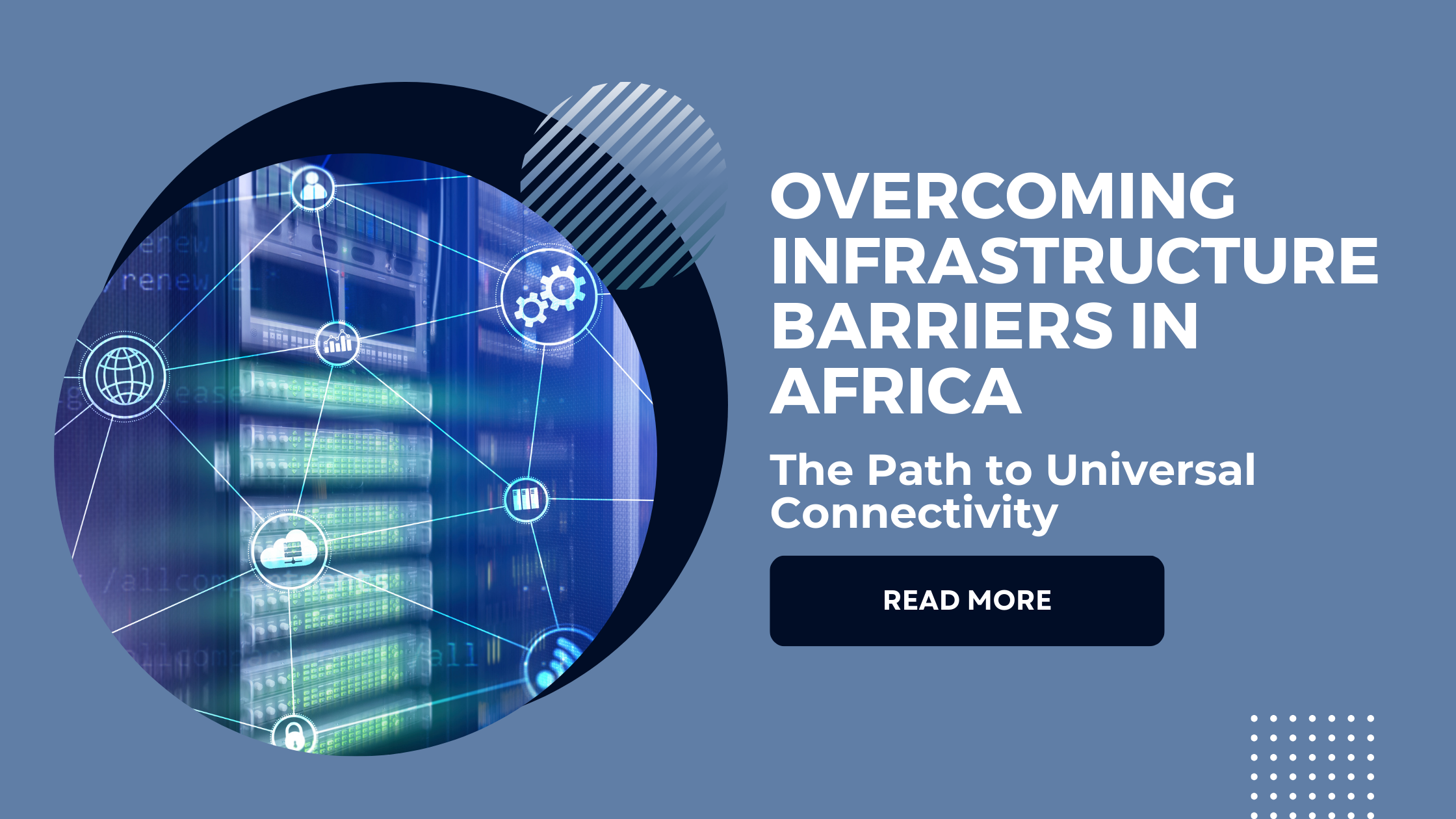Africa holds immense potential for digital transformation. With a young, tech-savvy population and burgeoning sectors across the continent, internet connectivity is crucial for economic growth, education, and social development. However, significant infrastructure barriers impede Africa’s ability to achieve universal connectivity and reap the benefits of the digital age. This blog explores these barriers and proposes strategies to overcome them, paving the way for Africa’s fully connected future.
Also Read: https://www.tauspace.com/how-a-lack-of-cybersecurity-is-stifling-africas-digital-renaissance/
State of Connectivity: Africa’s Challenges
- Limited & Costly Terrestrial Infrastructure: While fibre deployment has grown, vast swaths of the continent remain unserved or underserved. High costs and limited backhaul infrastructure, especially in rural areas, make extending the internet’s reach a monumental investment. The result is high-priced connections for those who are able to access them.
- Reliance on Outdated Technologies: In many areas, outdated technologies like 2G and 3G are still the norm. This makes accessing modern, data-heavy services and content difficult, limiting economic and educational possibilities.
- Undersea Cable Vulnerability: Despite its vast coastline, Africa critically depends on a few undersea cables. Breaks and outages have significant cascading effects, highlighting the fragility of the continent’s international bandwidth capacity.
- The Energy Gap: Unreliable power grids make operating critical telecom infrastructure a costly and unpredictable challenge. Power outages can bring entire networks down, especially in more remote regions.
- Regulatory Hurdles: Opaque regulations, high spectrum costs, and burdensome licensing processes often hinder investment and innovation. This can slow down infrastructure development and lead to higher prices passed on to the end user.
Bridging the Gap: Solutions and Strategies
Introducing strategies and solutions to bridge Africa’s digital divide is crucial for achieving equitable access to telecommunications across the continent. Here are some key approaches:
Investment in Last-Mile Infrastructure
A major push to extend connectivity to Africa’s remote and rural areas is non-negotiable. This requires a mixture of:
- Fibre expansion: Laying fibre to population centres, smaller towns, and villages lays the groundwork for reliable, high-speed broadband.
- Wireless innovations: Emerging technologies like low-earth orbit satellites and community mesh networks can bridge gaps while fibre networks are being developed.
- Public-Private Partnerships (PPPs): Incentivising and collaborating with telecom companies, governments, and international organisations to share the investment burden.
Undersea Cable Expansion and Redundancy
Africa needs more undersea cables, strategically placed to establish alternative routes. This will reduce reliance on current congested routes and mitigate disruptions in case of breaks. Investing in local landing stations is also necessary to fully maximise redundancy benefits.
Embracing Open Access Infrastructure
Sharing infrastructure (like towers, ducts, dark fibre) lowers deployment costs for individual operators. This fosters competition, driving down prices and making service more accessible for more Africans.
Tackling the Energy Challenge
- Off-grid Solutions: Embracing renewable energy like solar panels, localised mini-grids, and battery systems to power telecom infrastructure will reduce operational costs and make network deployment in less-electrified areas more feasible.
- Energy-Efficient Technologies: Investing in lower-power equipment and optimising network infrastructure can decrease energy consumption overall.
Creating an Enabling Regulatory Environment
- Spectrum Reform: Making spectrum allocation more efficient and affordable unlocks the potential for wider wireless network deployment.
- Tax Incentives: Tax breaks for infrastructure investment can attract foreign players and encourage greater deployment.
- Streamlined Processes: Bureaucratic red tape stifles growth. Simplifying licensing procedures and rules will increase the speed of network rollout.
The Benefits of Universal Connectivity
Investing in bridging the digital divide is not just a matter of technology, but a catalyst for transformational change across Africa:
- Economic Empowerment: Internet access fuels e-commerce, entrepreneurship, and access to global markets, creating jobs and economic opportunities.
- Education Transformation: Online learning resources, digital classrooms, and remote education reach underserved communities, closing the knowledge gap.
- Improved Healthcare: Telemedicine, remote consultations, and data-driven public health initiatives improve healthcare access and outcomes, even in the most remote areas.
- Empowered Governance: E-government services streamline bureaucracy, increase transparency, and can strengthen public participation in governance.
- Social Inclusion: Connectivity breaks down barriers, bringing people together across borders, fostering understanding and cultural exchange.
Conclusion
Despite the numerous challenges confronting Africa’s infrastructure, there’s no denying the significant progress the continent has made. The African Infrastructure 2023 Annual Review [1] underscores the remarkable advancements achieved and celebrates the considerable strides already taken. Overcoming infrastructure barriers to achieve universal connectivity in Africa requires a multi-faceted approach. Collaboration between governments, the private sector, and local innovators is key. By prioritising infrastructure investment, regulatory reform, and digital literacy, Africa can unlock its full digital potential and create a more inclusive and prosperous future for its citizens.
[1] https://manypossibilities.net/2024/01/african-telecommunications-infrastructure-in-2023/









